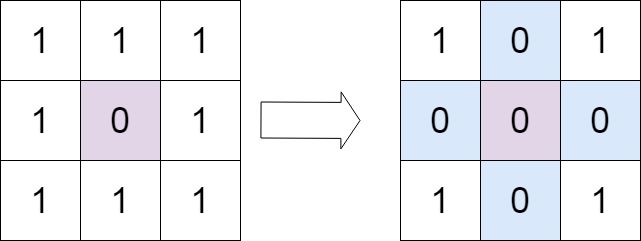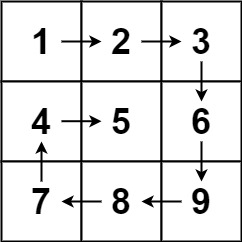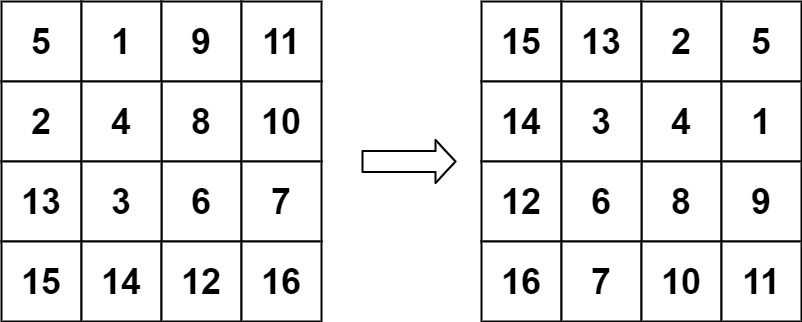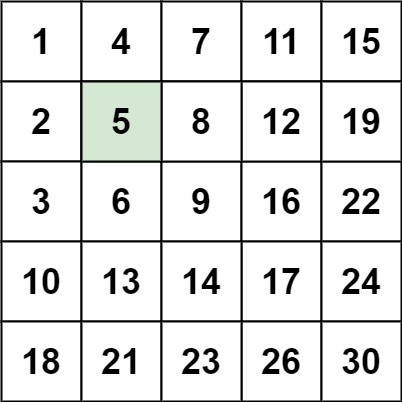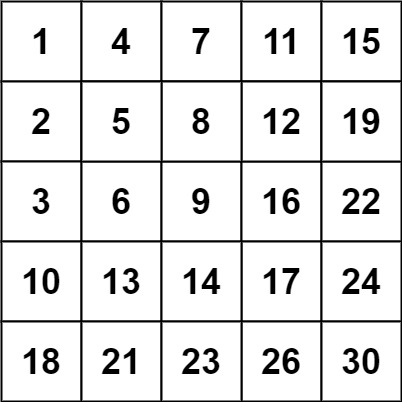hot100矩阵题解
560. 矩阵置零
问题描述
给定一个 m x n 的矩阵,如果一个元素为 0 ,则将其所在行和列的所有元素都设为 0 。请使用 原地 算法。
示例 1:
1
2
输入:matrix = [[1,1,1],[1,0,1],[1,1,1]]
输出:[[1,0,1],[0,0,0],[1,0,1]]
示例 2:
1
2
输入:matrix = [[0,1,2,0],[3,4,5,2],[1,3,1,5]]
输出:[[0,0,0,0],[0,4,5,0],[0,3,1,0]]
提示:
m == matrix.lengthn == matrix[0].length1 <= m, n <= 200- $-2^{31} <= matrix[i][j] <= 2^{31} - 1$
进阶:
- 一个直观的解决方案是使用
O(mn)的额外空间,但这并不是一个好的解决方案。 - 一个简单的改进方案是使用
O(m + n)的额外空间,但这仍然不是最好的解决方案。 - 你能想出一个仅使用常量空间的解决方案吗?
题解
以下是针对问题 560 的 C++ 解答,采用了 常量空间复杂度 的解法:
解题思路
我们可以利用矩阵的第一行和第一列作为标记,记录哪些行和列需要被置零,而不是使用额外的标记数组。这种方法在空间复杂度上是常量的。
步骤:
- 使用两个标志变量
rowFlag和colFlag,分别标记第一行和第一列是否需要置零。 - 遍历矩阵,从第二行和第二列开始,使用第一行和第一列记录需要置零的行和列。
- 再次遍历矩阵,根据第一行和第一列的标记,将对应的行和列置零。
- 根据
rowFlag和colFlag的值,处理第一行和第一列是否需要置零。
代码实现
1
2
3
4
5
6
7
8
9
10
11
12
13
14
15
16
17
18
19
20
21
22
23
24
25
26
27
28
29
30
31
32
33
34
35
36
37
38
39
40
41
42
43
44
45
46
47
48
49
50
51
52
#include <vector>
using namespace std;
void setZeroes(vector<vector<int>>& matrix) {
int m = matrix.size(), n = matrix[0].size();
bool rowFlag = false, colFlag = false;
// Step 1: Check if first row and first column need to be zero
for (int i = 0; i < m; ++i) {
if (matrix[i][0] == 0) {
colFlag = true;
break;
}
}
for (int j = 0; j < n; ++j) {
if (matrix[0][j] == 0) {
rowFlag = true;
break;
}
}
// Step 2: Use first row and first column as markers
for (int i = 1; i < m; ++i) {
for (int j = 1; j < n; ++j) {
if (matrix[i][j] == 0) {
matrix[i][0] = 0;
matrix[0][j] = 0;
}
}
}
// Step 3: Zero out cells based on markers
for (int i = 1; i < m; ++i) {
for (int j = 1; j < n; ++j) {
if (matrix[i][0] == 0 || matrix[0][j] == 0) {
matrix[i][j] = 0;
}
}
}
// Step 4: Zero out first row and column if needed
if (colFlag) {
for (int i = 0; i < m; ++i) {
matrix[i][0] = 0;
}
}
if (rowFlag) {
for (int j = 0; j < n; ++j) {
matrix[0][j] = 0;
}
}
}
复杂度分析
- 时间复杂度: $O(m \times n)$ 遍历矩阵两次,每次都是 $m \times n$ 的规模。
- 空间复杂度: $O(1)$ 仅使用了两个标志变量和矩阵自身的第一行与第一列作为标记,没有额外的空间开销。
示例运行
输入:
1
2
vector<vector<int>> matrix = {{1, 1, 1}, {1, 0, 1}, {1, 1, 1}};
setZeroes(matrix);
输出:
1
// matrix = {{1, 0, 1}, {0, 0, 0}, {1, 0, 1}};
这个解法高效且满足常量空间的要求,非常适合在实际问题中使用。
54. 螺旋矩阵
问题描述
给你一个 m 行 n 列的矩阵 matrix ,请按照 顺时针螺旋顺序 ,返回矩阵中的所有元素。
示例 1:
1
2
输入:matrix = [[1,2,3],[4,5,6],[7,8,9]]
输出:[1,2,3,6,9,8,7,4,5]
示例 2:
1
2
输入:matrix = [[1,2,3,4],[5,6,7,8],[9,10,11,12]]
输出:[1,2,3,4,8,12,11,10,9,5,6,7]
提示:
m == matrix.lengthn == matrix[i].length1 <= m, n <= 10-100 <= matrix[i][j] <= 100
题解
以下是针对问题 54 的 C++ 解答,按照顺时针螺旋顺序遍历矩阵。
解题思路
我们可以通过维护四个边界变量 (top, bottom, left, right) 来实现螺旋遍历:
- 初始时,
top指向第一行,bottom指向最后一行,left指向第一列,right指向最后一列。 - 按顺时针顺序:
- 从左到右遍历当前顶部行 (
top),然后将top下移。 - 从上到下遍历当前右边列 (
right),然后将right左移。 - 从右到左遍历当前底部行 (
bottom),然后将bottom上移(如果未越界)。 - 从下到上遍历当前左边列 (
left),然后将left右移(如果未越界)。
- 从左到右遍历当前顶部行 (
- 每次遍历完成后更新边界条件,直到所有元素都被访问。
代码实现
1
2
3
4
5
6
7
8
9
10
11
12
13
14
15
16
17
18
19
20
21
22
23
24
25
26
27
28
29
30
31
32
33
34
35
36
37
38
39
40
41
42
43
44
#include <vector>
using namespace std;
vector<int> spiralOrder(vector<vector<int>>& matrix) {
vector<int> result;
if (matrix.empty() || matrix[0].empty()) {
return result;
}
int top = 0, bottom = matrix.size() - 1;
int left = 0, right = matrix[0].size() - 1;
while (top <= bottom && left <= right) {
// Traverse from left to right along the top row
for (int j = left; j <= right; ++j) {
result.push_back(matrix[top][j]);
}
++top; // Move the top boundary down
// Traverse from top to bottom along the right column
for (int i = top; i <= bottom; ++i) {
result.push_back(matrix[i][right]);
}
--right; // Move the right boundary left
if (top <= bottom) {
// Traverse from right to left along the bottom row
for (int j = right; j >= left; --j) {
result.push_back(matrix[bottom][j]);
}
--bottom; // Move the bottom boundary up
}
if (left <= right) {
// Traverse from bottom to top along the left column
for (int i = bottom; i >= top; --i) {
result.push_back(matrix[i][left]);
}
++left; // Move the left boundary right
}
}
return result;
}
复杂度分析
- 时间复杂度: $O(m \times n)$ 每个元素被访问一次,总共 $m \times n$ 个元素。
- 空间复杂度: $O(1)$ 除了存储结果的数组
result,没有使用额外的空间。
示例运行
输入:
1
2
vector<vector<int>> matrix = {{1, 2, 3}, {4, 5, 6}, {7, 8, 9}};
vector<int> result = spiralOrder(matrix);
输出:
1
// result = {1, 2, 3, 6, 9, 8, 7, 4, 5};
边界情况
- 如果矩阵为空:返回空数组。
- 如果矩阵为单行或单列:直接按行或列顺序返回。
- 如果矩阵为 $1 \times 1$:返回该元素。
48. 旋转图像
问题描述
给定一个 n × n 的二维矩阵 matrix 表示一个图像。请你将图像顺时针旋转 90 度。
你必须在 原地 旋转图像,这意味着你需要直接修改输入的二维矩阵。请不要 使用另一个矩阵来旋转图像。
示例 1:
1
2
输入:matrix = [[1,2,3],[4,5,6],[7,8,9]]
输出:[[7,4,1],[8,5,2],[9,6,3]]
示例 2:
1
2
输入:matrix = [[5,1,9,11],[2,4,8,10],[13,3,6,7],[15,14,12,16]]
输出:[[15,13,2,5],[14,3,4,1],[12,6,8,9],[16,7,10,11]]
提示:
n == matrix.length == matrix[i].length1 <= n <= 20-1000 <= matrix[i][j] <= 1000
题解
以下是针对问题 48 的 C++ 解法,采用原地旋转的方法。
解题思路
要将一个矩阵顺时针旋转 90 度,可以分两步完成:
- 先沿主对角线翻转(左上到右下的对角线),使得行列元素交换。
- 再沿垂直中线翻转,将每一行的元素顺序颠倒。
通过这两步操作,我们可以在不使用额外空间的情况下实现矩阵的顺时针旋转。
代码实现
1
2
3
4
5
6
7
8
9
10
11
12
13
14
15
16
17
18
19
20
#include <vector>
using namespace std;
void rotate(vector<vector<int>>& matrix) {
int n = matrix.size();
// Step 1: Transpose the matrix (swap along the main diagonal)
for (int i = 0; i < n; ++i) {
for (int j = i + 1; j < n; ++j) {
swap(matrix[i][j], matrix[j][i]);
}
}
// Step 2: Reverse each row (flip along the vertical centerline)
for (int i = 0; i < n; ++i) {
for (int j = 0; j < n / 2; ++j) {
swap(matrix[i][j], matrix[i][n - j - 1]);
}
}
}
复杂度分析
时间复杂度:
$O(n^2)$
- 转置矩阵需要遍历矩阵上三角部分,共 $\frac{n(n-1)}{2}$ 次操作。
- 翻转每行需要 $n/2$ 次操作,总共 $n^2 / 2$ 次操作。
- 总体复杂度是 $O(n^2)$。
空间复杂度:
$O(1)$
- 只使用了常量级别的辅助变量。
示例运行
输入:
1
2
vector<vector<int>> matrix = {{1, 2, 3}, {4, 5, 6}, {7, 8, 9}};
rotate(matrix);
输出:
1
// matrix = {{7, 4, 1}, {8, 5, 2}, {9, 6, 3}};
边界情况
- 矩阵为 $1 \times 1$:旋转后矩阵不变。
- 矩阵为 $2 \times 2$:最小的可旋转矩阵,仍然满足算法要求。
- 负数或较大数值的矩阵:不会影响算法的正确性。
补充说明
这个解法充分利用了二维矩阵的对称性质,通过两次原地翻转实现了旋转操作,非常高效且简洁。
240. 搜索二维矩阵 II
问题描述
编写一个高效的算法来搜索 m x n 矩阵 matrix 中的一个目标值 target 。该矩阵具有以下特性:
- 每行的元素从左到右升序排列。
- 每列的元素从上到下升序排列。
示例 1:
1
2
输入:matrix = [[1,4,7,11,15],[2,5,8,12,19],[3,6,9,16,22],[10,13,14,17,24],[18,21,23,26,30]], target = 5
输出:true
示例 2:
1
2
输入:matrix = [[1,4,7,11,15],[2,5,8,12,19],[3,6,9,16,22],[10,13,14,17,24],[18,21,23,26,30]], target = 20
输出:false
提示:
m == matrix.lengthn == matrix[i].length1 <= n, m <= 300- $-10^9 <= matrix[i][j] <= 10^9$
- 每行的所有元素从左到右升序排列
- 每列的所有元素从上到下升序排列
- $-10^9 <= target <= 10^9$
题解
以下是针对问题 240 的高效 C++ 解法,利用矩阵的排序特性实现:
解题思路
我们可以从矩阵的 右上角 开始搜索:
- 比较当前位置的元素和目标值:
- 如果当前位置的元素等于目标值,返回
true。 - 如果当前位置的元素大于目标值,则当前列的所有元素都大于目标值,向左移动一列。
- 如果当前位置的元素小于目标值,则当前行的所有元素都小于目标值,向下移动一行。
- 如果当前位置的元素等于目标值,返回
- 重复以上过程,直到超出矩阵边界。
这种方法可以高效缩小搜索范围,每次移动时排除一整行或一整列。
代码实现
1
2
3
4
5
6
7
8
9
10
11
12
13
14
15
16
17
18
19
20
21
22
23
24
#include <vector>
using namespace std;
bool searchMatrix(vector<vector<int>>& matrix, int target) {
if (matrix.empty() || matrix[0].empty()) {
return false;
}
int m = matrix.size();
int n = matrix[0].size();
int row = 0, col = n - 1; // 从右上角开始
while (row < m && col >= 0) {
if (matrix[row][col] == target) {
return true; // 找到目标值
} else if (matrix[row][col] > target) {
--col; // 左移一列
} else {
++row; // 下移一行
}
}
return false; // 未找到目标值
}
复杂度分析
- 时间复杂度: $O(m + n)$ 每次移动时,要么减少一列(向左移动),要么减少一行(向下移动)。最多移动 $m + n$ 次。
- 空间复杂度: $O(1)$ 只使用了常量空间,没有额外的数据结构。
示例运行
输入:
1
2
3
4
5
6
7
8
9
vector<vector<int>> matrix = {
{1, 4, 7, 11, 15},
{2, 5, 8, 12, 19},
{3, 6, 9, 16, 22},
{10, 13, 14, 17, 24},
{18, 21, 23, 26, 30}
};
int target = 5;
bool result = searchMatrix(matrix, target);
输出:
1
// result = true;
边界情况
- 空矩阵:返回
false。 - 矩阵只有一行或一列:仍然适用于该算法。
- 目标值超出矩阵范围:如
target = -1或target = 31,快速返回false。
扩展
- 如果需要查找多个目标值,可以对每个目标值分别调用该函数,或根据具体问题需求调整算法。
